Parainoa subconcolor (Anzi) Resl & T. Sprib.
in Resl & al., Fungal Divers., 73: 254, 2015. Basionym: Biatora subconcolor Anzi - Comm. Soc. Critt. Ital., 1, 3: 151, 1862.
Synonyms: Lecidea subconcolor (Anzi) Jatta; Rinodina humilis H. Magn.; Trapelia subconcolor (Anzi) Hertel; Trapeliopsis subconcolor (Anzi) Hertel
Distribution: N - TAA (Nascimbene & al. 2022, Svensson & Westberg 2025), Lomb (Resl & al. 2015).
Description: Thallus crustose, episubstratic, rimose-areolate to verrucose-areolate, whitish, cream-coloured to pale grey-white, sometimes with a pale brown hue, without a distinct prothallus, the areoles often strongly convex and almost papillate, turning into lens-shaped to finally subglobose, 0.1-0.13 mm wide schizidia that easily detach, leaving shallow, circular and sharply defined depressions in the thallus. Medulla white, I-. Apothecia lecideine, sessile and constricted at base, 0.5-3.5 mm across, with a mostly flat, pale to medium brown disc and a darker brown, thick, raised, persistent, often sinuous proper margin. Proper exciple thick, with an ochraceous yellow outer part, and a colourless medullary part filled by yellowish grey, small crystals reacting K+ yellow and P+ orange; epithecium ochraceous yellow, N-, C- or rarely C+ red; hymenium colourless 50-100 μm high; paraphyses coherent, much branched and anastomosing; hypothecium yellowish. Asci 8-spored, cylindrical-clavate, thin-walled, the apical dome K/I- or K/I+ pale blue, Trapelia-type. Ascospores 1-celled, hyaline, ellipsoid or drop-shaped, 8-16 x 4-7 μm. Photobiont chlorococcoid. Spot tests: thallus K+ yellow, C-, KC-, P+ orange. Chemistry: stictic acid syndrome in thallus; sometimes gyrophoric acid in the apothecia.Note: a rarely-collected, but widespread species found on basic siliceous rocks in more or less sheltered situations, mostly in upland areas. For further details see Svensson & Westberg (2025).
Growth form: Crustose
Substrata: rocks
Photobiont: green algae other than Trentepohlia
Reproductive strategy: mainly sexual
Commonnes-rarity: (info)
Alpine belt: absent
Subalpine belt: extremely rare
Oromediterranean belt: absent
Montane belt: very rare
Submediterranean belt: absent
Padanian area: absent
Humid submediterranean belt: absent
Humid mediterranean belt: absent
Dry mediterranean belt: absent

Predictive model

Source: Svensson M., Westberg M. 2025. Notes on the distribution and taxonomy of Parainoa subconcolor (Baeomycetaceae, Ostropomycetidae). Graphis Scripta, 37, 3: 10-18. - CC BY-4.0
Sweden, Värmland (UPS L-1020358). Bar = 1 mm

Source: Svensson M., Westberg M. 2025. Notes on the distribution and taxonomy of Parainoa subconcolor (Baeomycetaceae, Ostropomycetidae). Graphis Scripta, 37, 3: 10-18. - CC BY-4.0
Isolectotype of Rinodina humilis (UPS L-154509). Bar = 1 mm.
Growth form: Crustose
Substrata: rocks
Photobiont: green algae other than Trentepohlia
Reproductive strategy: mainly sexual
Commonnes-rarity: (info)
Alpine belt: absent
Subalpine belt: extremely rare
Oromediterranean belt: absent
Montane belt: very rare
Submediterranean belt: absent
Padanian area: absent
Humid submediterranean belt: absent
Humid mediterranean belt: absent
Dry mediterranean belt: absent

Predictive model

Source: Svensson M., Westberg M. 2025. Notes on the distribution and taxonomy of Parainoa subconcolor (Baeomycetaceae, Ostropomycetidae). Graphis Scripta, 37, 3: 10-18. - CC BY-4.0
Sweden, Värmland (UPS L-1020358). Bar = 1 mm

 INDEX FUNGORUM
INDEX FUNGORUM
 GBIF
GBIF
 DOLICHENS
DOLICHENS



